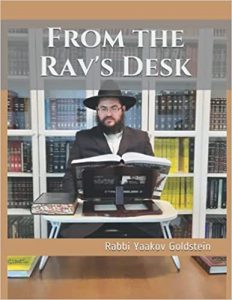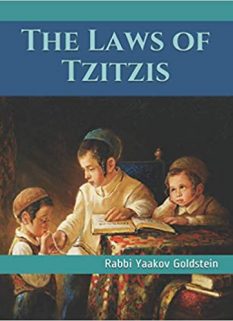
*As an Amazon Associate I earn from qualifying purchases.
Recent Q&A
The Chabad custom follows the Zman Baal Hatanya/Gr”a for Sof Zman Achilas Chamet, in contrast to that of the Magen Avraham.[1] Nonetheless, the Chabad custom, as was followed by the Chabad Rabbeim, was to stop eating Chametz 45 minutes before the start of the 5th hour.[2] Thus, in conclusion, even according to the Chabad custom to follow the later timeframe [i.e. Zman Baal Hatanya], in actuality one should arrange to finish his breakfast and stop eating Chametz close to, and at times even earlier, than the early time frame [i.e. Zman Magen Avraham] in order to abstain from Chametz 45 minutes before the end time. Nonetheless, if for whatever reason one did not manage to eat, or finish eating, Chametz by the end time of the Baal Hatanya, then one may even initially eat until this point.[3]
[1] Igros Kodesh 10:294; Likkutei Sichos 29:378;
[2] Admur in Siddur regarding Kerias Shema; Letter of Rav Yaakov Landau ,printed in Kovetz Yagdil Torah N.Y. Vol. 52 p. 150, that so he was instructed by the Rebbe Rashab, in name of his father the Rebbe Maharash, that even by Rabbinical matters one is to precede himself 45 minutes from the end time, and thus he was told by the Rebbe Rashab to stop eating Chametz 3/4 ‘s of an hour before the time; Rav Eli Landa Shlita confirmed with me that this is the practical Chabad custom that is to be followed [although he said 40 minutes before the time, not 45]
[3] Avraham Chaim Naa’h, printed in Yagdil Torah 6:2604
See
3b. Sof Zman Achilas Chametz-When does it become prohibited to eat Chametz? – Shulchanaruchharav.com
He should say Baruch Sheim etc and continue the Seder as usual.
The wine is to be spilled into a broken vessel, such as a chipped plate or bowl.
It is attested that in the earlier years the Rebbe did not use an actual broken vessel, although in later years he did.
Where is Yoshka buried according to Judaism?[1]
In Shaar Hagilgulim of Rav Chaim Vital it states that he is buried near Tzefas: To the north of Safed, when you travel from Safed northward towards the village of Ein Zeitun, there is a carob tree. There lies the burial place of Yoshka the Nazarene. There are two paths: the right one goes to Ein Zeitun, and the left one leads to the aforementioned pool. In the middle of these two paths, there is a large valley with olive trees, and at the northern end of this valley, there is a flowing stream of water descending from a well known as Gefar, located between Safed and Ein Zeitun. There is a bridge over this stream, and the waters pass through it. The stream continues and descends to the north side of the aforementioned valley. At the last olive tree, the mother of Rabbi Khrispadai Hamid Laba, mentioned in the Zohar portion of Shelach Lecha, is buried there.
Vilnai in his Sefer Matzeivos Kodesh 2 p. 354 footnote 33 mentions an earlier testimony related to Yoshka in the area of Safed. A Spanish Nazarite recounts in about the year 1555, near Safed, one can see a stone with the mark of a right hand with five fingers. They say it’s the mark of the hand of Yoshka the Nazarene. This is found outside the town on the wall of a spring under a poplar tree, about a bowshot from the poplar and the stone. A carob tree grows. The Jews here say that Yoshka hid in this place, and they told us, ‘Your Yoshka put his hand on this stone, and only the mark of his palm remained on it.’ The road from Safed to Ein Zeitun descends even today from the Jewish quarter towards the northwest, winding until it reaches the Schouya stream. From there, it climbs to Ein Zeitun. In the middle of the road between Safed and the Schouya stream, there is a crossroads. Directly north, the right path goes towards Ein Zeitun, and westward, the left path leads to the canyon section of the Schouya stream, which flows into the Amud stream to the north of the junction. Between these two paths, in the middle of these two paths, see below page Rabbi Chaim Vital, there is still a plain.
It should be noted that there is an ancient Jewish tradition about the crucifixion of Yoshka in Tiberias, his temporary burial in that city, and his final burial somewhere in the Galilee. This tradition does not mention the exact location of his final burial, and Safed is not mentioned until sources from the 16th century CE. For more on the tradition of Yoshka’s crucifixion in Tiberias, see Reiner (1996), vol. 1, pp. xx-xx, and sources and references in the “Book of the History of Yoshka” which fragments were found in the Cairo Genizah.
The above is in contrast to the Christian tradition which traditionally believed him to be buried in the Church of the Holy Sepulchre, located in the Christian Quarter of the Old City of Jerusalem. This site has been venerated since the 4th century as the place where Yoshka was crucified, buried. Another location, known as the Garden Tomb, is also considered by some to be the burial site. It was discovered in the 19th century and is located outside the Old City of Jerusalem. However, this site is less widely accepted by scholars.
[1] See Shaar Hagilgulim Hakdama 37 [non-censored edition]; Mekomos Kedoshim Ukivrei Tzadikim Bagalil 2 p. 77
Chassidus Articles
Halacha Articles
Other Articles
From the Ravs Desk: Latest articles and Q&A [Thursday 9th Sivan 5785]
Post Views: 42 *As an Amazon Associate I earn from qualifying purchases. Buy in Paperback or Kindle [4 Volumes] Buy on Apple Books Purchase on our website Join Daily Halacha distribution list Sponsor an Episode Donate Recent Q&A Removing and replacing Mezuzos of home upon moving in Question Should one
From the Ravs Desk: Latest articles and Q&A [Tuesday 7th Sivan 5785]
Post Views: 144 *As an Amazon Associate I earn from qualifying purchases. Buy in Paperback or Kindle [4 Volumes] Buy on Apple Books Purchase on our website Join Daily Halacha distribution list Sponsor an Episode Donate Recent Q&A Why did the Sages not institute to recite Pesukei Dezimra right before
From the Ravs Desk: Latest articles and Q&A [Thursday 2nd Sivan 5785]
Post Views: 283 *As an Amazon Associate I earn from qualifying purchases. Buy in Paperback or Kindle [4 Volumes] Buy on Apple Books Purchase on our website Join Daily Halacha distribution list Sponsor an Episode Donate Recent Q&A This year that Shavuos falls on Sunday night, may one get a
From the Ravs Desk: Latest articles and Q&A [Wednesday 1st Sivan 5785]
Post Views: 185 *As an Amazon Associate I earn from qualifying purchases. Buy in Paperback or Kindle [4 Volumes] Buy on Apple Books Purchase on our website Join Daily Halacha distribution list Sponsor an Episode Donate Recent Q&A Were all the Jewish souls present by Har Sinai during Matan Torah?
From the Ravs Desk: Latest articles and Q&A [Tuesday 29th Iyar 5785]
Post Views: 195 *As an Amazon Associate I earn from qualifying purchases. Buy in Paperback or Kindle [4 Volumes] Buy on Apple Books Purchase on our website Join Daily Halacha distribution list Sponsor an Episode Donate Recent Q&A Should Shehechiyanu be recited on fruits available all year round thanks to
From the Ravs Desk: Latest articles and Q&A [Monday 28th Iyar 5785]
Post Views: 235 *As an Amazon Associate I earn from qualifying purchases. Buy in Paperback or Kindle [4 Volumes] Buy on Apple Books Purchase on our website Join Daily Halacha distribution list Sponsor an Episode Donate Recent Q&A Waiting six hours after eating onions fried in dairy pot If a

 Donate
Donate
Leave A Comment?
You must be logged in to post a comment.